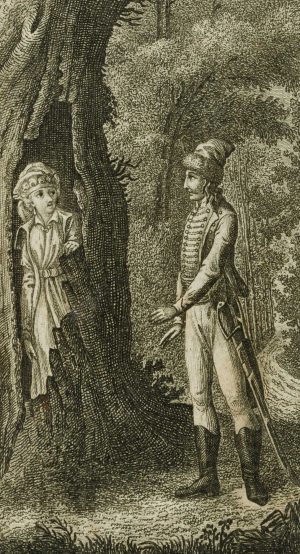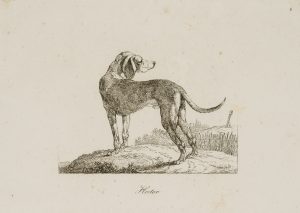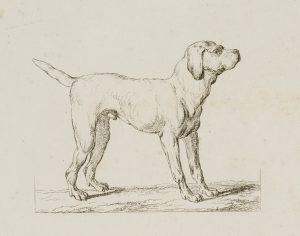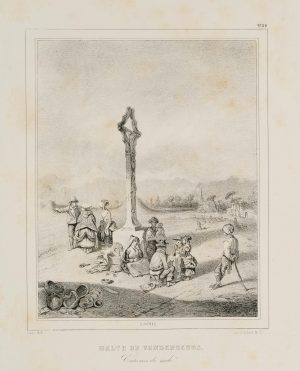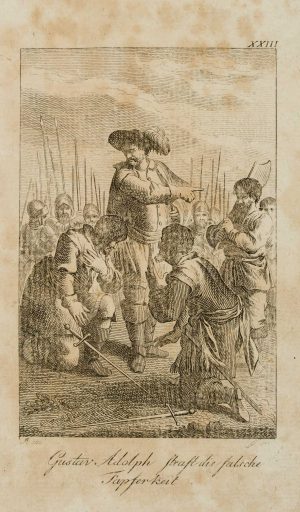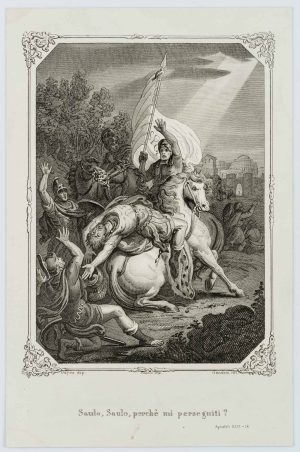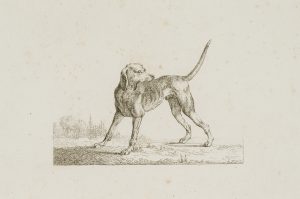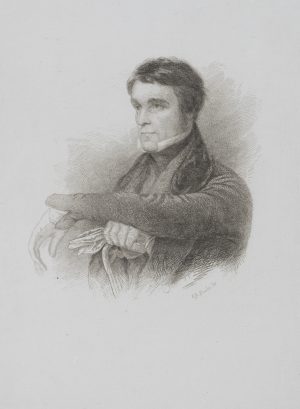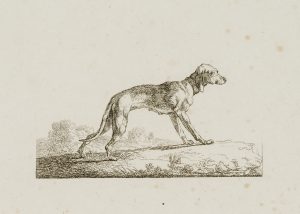Philippe Thomassin (1562 Troyes – 1622 Rom), Apollo (Phoebus), nach einer antiken Statue, Platte 19, um 1610, Kupferstich
- Technik: Kupferstich auf Büttenpapier
- Datierung: um 1610
- Beschreibung: Nach antiker Statue in einer Konche. Apollon gehört zu den Olympischen Göttern und spielt, da er den Künsten zugeordnet wurde, seit der Antike eine große Rolle in der Dichtung und den Bildenden Künsten. Aus: Antiquarum statuarum urbis Romae liber primus, P. Thomassin, 1610. Es gilt nach erscheinen des Stichwerks Giovanni Battista de Cavalieri “Antiquarum Statuarum Urbis Romae Tertius et Quartus Liber” (1594) als das erste Werk mit selbstständigen Stichen nach antiken Statuen, von Philippe Thomassin persönlich gezeichnet und gestochen. Der französische Kupferstecher war der erste Lehrmeister Jacques Callots; er schuf über 430 Stiche, darunter viele nach Gemälden italienischer Meister wie Michelangelo.
Insgesamt handelt es sich um die Illustration von 50 – durchweg in Konchen aufgestellten – antiken Statuen. 23 davon stammen aus der Sammlung Borghese, 5 aus der kapitolinischen Sammlung, jeweils vier aus der Sammlung Medici und aus der Sammlung Farnese, 3 aus Rom: Palazzo Apostolico, Cortile del Belvedere, Statuenhof sowie eine aus der Sammlung Cesarini. Die übrigen sind ohne Angabe des Standortes.
Zur Datierung: Als Terminus post quem gilt 1610 aufgrund der Existenz einer Statue der Sammlung Borghese aus dem Nachlass des Guglielmo della Porta (Verkauf 1609 an Giovanni Battista Borghese); terminus ante quem: 1622. Unter der Darstellung innerhalb der Druckplatte bezeichnet: “Apolinis in viridario Magni Ducis Etruriae”.
Aus dem Nachlass des Antiquars Rosenthal München / Amsterdam. - Schlagworte: Mythologie, Italien, Figürlich, 1600-1649
- Größe: 22,5 cm x 14,4 cm, Darstellung: 12,3 cm x 8,2 cm
- Zustand: Guter Zustand. Die Darstellung macht einen sehr guten Eindruck. Das Blatt ist altersbedingt leicht stockfleckig, entlang der linken Blattkante mit Spuren der Herauslösung aus einer Bindung.
English Version:
Philippe Thomassin (1562 Troyes – 1622 Rom), Apollo (Phoebus), after an antique statue, plate 19, c. 1610, Copper engraving
- Technique: Copper engraving on
- Date: c. 1610
- Description: After an ancient statue in a conch. Apollo belongs to the Olympic gods and, since he was assigned to the arts, has played a major role in poetry and the fine arts since antiquity. From: Antiquarum statuarum urbis Romae liber primus, P. Thomassin, 1610. After the publication of Giovanni Battista de Cavalieri’s engraving work “Antiquarum Statuarum Urbis Romae Tertius et Quartus Liber” (1594), it is considered to be the first work with independent engravings after antique statues, personally drawn and engraved by Philippe Thomassin. The French engraver was Jacques Callot’s first teacher; he created over 430 engravings, many of them after paintings by Italian masters such as Michelangelo.
In all, the work involves the illustration of 50 ancient statues, all of which were set up in conchs. 23 of them come from the Borghese Collection, 5 from the Capitoline Collection, four each from the Medici Collection and the Farnese Collection, 3 from Rome: Palazzo Apostolico, Cortile del Belvedere, Statuary Courtyard and one from the Cesarini Collection. The others are without indication of location.
For dating: The terminus post quem is considered to be 1610 due to the existence of a statue from the Borghese collection from the estate of Guglielmo della Porta (sold in 1609 to Giovanni Battista Borghese); terminus ante quem: 1622. Inscribed below the image within the printing plate: “Apolinis in viridario Magni Ducis Etruriae”.
From the estate of the antiquarian Rosenthal Munich / Amsterdam. - Keywords: 17th century, Figurative, Mythology, Italy,
- Size: 22,5 cm x 14,4 cm (8,9 x 5,7 in), Depiction: 12,3 cm x 8,2 cm (4,8 x 3,2 in)
- Condition: Good condition. The image makes a very good impression. The sheet is slightly foxed due to its age, along the left edge of the sheet with traces of detachment from a binding.









